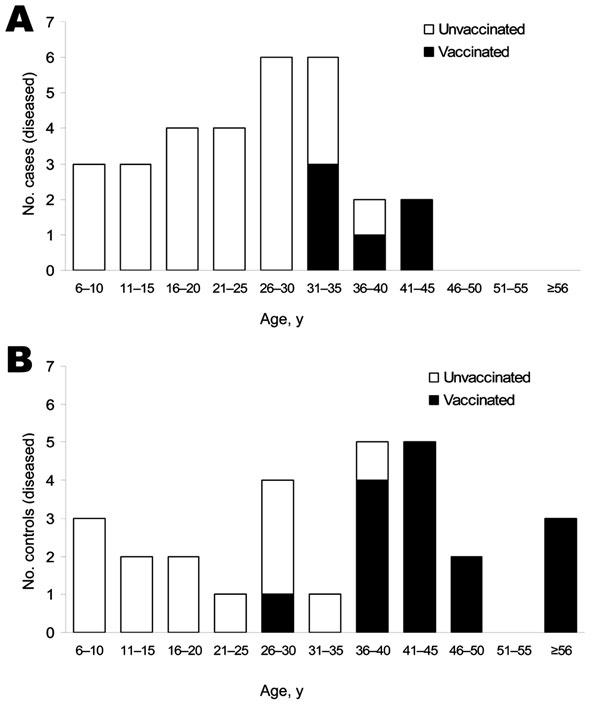Volume 13, Number 9—September 2007
Research
Spectrum of Infection and Risk Factors for Human Monkeypox, United States, 2003
Figure 1

Figure 1. Age distribution of monkeypox virus–infected case-patients (A) and controls (B) and smallpox vaccination status. No study participants reported having received a smallpox vaccination within 25 years of August 2003.
Page created: July 01, 2010
Page updated: July 01, 2010
Page reviewed: July 01, 2010
The conclusions, findings, and opinions expressed by authors contributing to this journal do not necessarily reflect the official position of the U.S. Department of Health and Human Services, the Public Health Service, the Centers for Disease Control and Prevention, or the authors' affiliated institutions. Use of trade names is for identification only and does not imply endorsement by any of the groups named above.